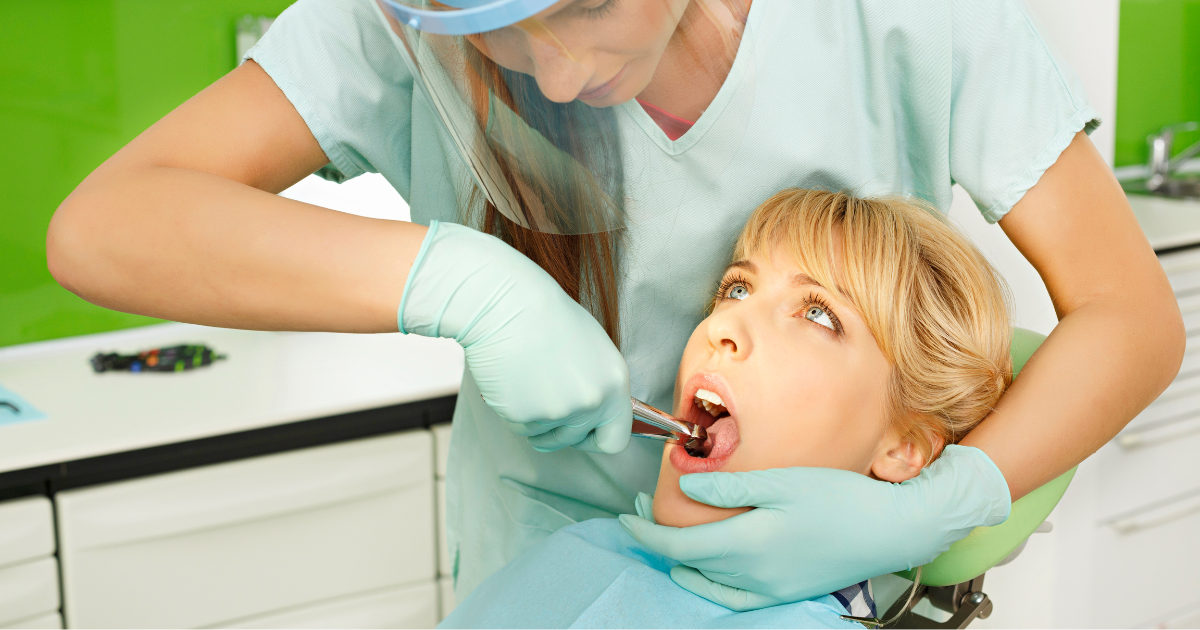Orthodontic treatment is all about creating a beautiful, healthy smile by aligning the teeth and jaws. Sometimes, achieving the best results requires more than just braces or aligners; it may involve tooth extraction. Although this might seem extreme, tooth extraction can be crucial for successful orthodontic care.
Here’s a closer look at why tooth extraction may be necessary in orthodontic treatment when it’s recommended, and what you can expect from the process.
Why Tooth Extraction May Be Needed?
Tooth extraction plays a key role in orthodontics for several reasons:
- Crowded Teeth: If there isn’t enough space in the mouth for all your teeth, removing some can help create the necessary room. This is especially important for effective alignment with braces or clear aligners.
- Bite Issues: In order to enhance how your teeth fit together, conditions like an overbite or underbite may necessitate extractions. This stage assists in repositioning the bite to a more useful position.
- Jaw Alignment: In some cases, extracting certain teeth can aid in better jaw alignment, enhancing both appearance and function.
- Aesthetic Improvement: Teeth extractions can also be done to make your smile more symmetrical. Your orthodontist can create a more balanced and appealing smile by making extra space.
When is Tooth Extraction Recommended?
This extraction process is not always necessary, but it might be recommended in specific situations:
- Severe Crowding: When there’s insufficient space in the mouth for all the teeth to fit properly, extractions can make room for alignment.
- Impacted Teeth: Teeth that are blocked or growing incorrectly might need to be extracted to prevent further complications and allow other teeth to move into their proper positions.
- Orthodontic Goals: Your orthodontist may suggest extractions to meet specific treatment goals, such as improving bite functionality or correcting misalignment.
- Early Orthodontic Intervention: For children, extracting certain primary teeth can help guide the growth of permanent teeth and prevent future orthodontic issues.
The Tooth Extraction Process
If your orthodontist or dentist Irving determines that tooth extraction is necessary, here’s what you can expect:
- Consultation: Your initial visit will include a thorough examination and discussion about the need for extraction. This will help you understand how the procedure fits into your overall orthodontic plan.
- Imaging: X-rays and other imaging techniques are often used to evaluate the position of your teeth and plan the extraction.
- Procedure: The extraction is typically performed under local anesthesia to ensure you’re comfortable. The dentist will carefully remove the tooth while minimizing disruption to surrounding tissues.
- Post-Extraction Care: After the extraction, your dentist Irving, will provide detailed care instructions to ensure proper healing. This may include recommendations for diet, oral hygiene, and pain management.
How Does Tooth Extraction Affect Orthodontic Treatment?
Tooth extraction Irving can significantly impact the success of your orthodontic treatment:
- Creating Space: By removing certain teeth, you create the space needed for the remaining teeth to shift into their correct positions. This makes it easier to achieve optimal alignment with braces or aligners.
- Improving Bite: Extractions can help address issues like overcrowding or bite discrepancies, leading to a more functional and comfortable bite.
- Enhancing Aesthetics: Proper alignment and spacing improve the appearance of your smile, contributing to a more balanced and aesthetically pleasing result.
Aftercare and Considerations
Following an extraction, it’s important to follow these aftercare tips:
- Adhere to Instructions: Follow the care instructions provided by your dentist to avoid complications and ensure a smooth recovery.
- Maintain Good Oral Hygiene: Keep your mouth clean to prevent infection and support healing.
- Attend Follow-Up Appointments: Regular visits to your orthodontist will help monitor your progress and make any necessary adjustments to your treatment plan.
Tooth extraction might be a necessary step in your orthodontic journey to achieve the best possible results. If you have any concerns or questions, consult with your dentist in Irving. They can help you comprehend how extraction fits into your overall treatment plan and can walk you through the procedure. Recall that the objective is to provide a more functional, healthy grin that you will be happy to display.
Frequently Asked Questions
What should I do to prepare for a tooth extraction?
Prepare by discussing any medications or health conditions with your dentist. Follow any pre-procedure instructions given, such as fasting if you’ll be sedated. Also, arrange for someone to drive you home if necessary.
How long does recovery take after a tooth extraction?
Recovery time can vary, but most people experience initial healing within a week. Complete healing of the gum tissue may take a few weeks. Following your dentist’s aftercare instructions will help speed up recovery.
Does tooth extraction hurt?
Tooth extraction is usually performed under local anesthesia, so you won’t feel pain during the procedure. Afterward, you might experience some discomfort, which can be managed with over-the-counter pain relievers and by following post-extraction care instructions.

